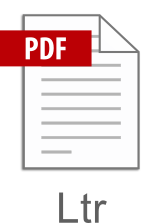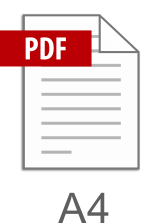Global technology consultancy Dimension Data is part of the NTT Group, one of the world's largest telecommunications service providers and organizations. Dimension Data’s services assist its customers to grow and compete, serving their own customers better, by bringing the right blends of technology together.
Like most organizations in its field, Dimension Data faced significant challenges in the generation of complex client-facing documents. For Dimension Data the challenges were crystallized in the time and effort required to create statements of work, documents that can run to hundreds of pages requiring accurate and consistent merging of static and customer- and solution-specific content including large volumes of data from MS Project.
Dimension Data had already invested in comprehensive CRM and MS Project implementations but the task of quickly and efficiently selecting and combining the correct static and dynamic content and data needed a broader solution.

Company
Dimension Data
Founded
1983
Industry
Technology Services
Headquarters
Sydney, Australia
URL
www.dimensiondata.com
Challenge
Improve efficiency, accuracy, speed, and consistency in the generation of complex customer-facing statement-of-work documents.
Solution
Implement wizard-driven ActiveDocs Opus Document Composition, integrated with MS Project and CRM for data utilization, leveraging rule-based filtering and selection of content, to enable document generation in minutes.
Benefits
Improved efficiency as document assembly time reduces by orders of magnitude; improved accuracy and reduced risk reduction through automated rule-based content selection; improved productivity as consultants’ time is unlocked for high value tasks.
Download a Copy


Integrating CRM for customer information, MS Project for project data, and ActiveDocs Opus for document generation enhances efficiency and accuracy for Dimension Data and releases valuable consultant time for higher value tasks.
The Solution
ActiveDocs Opus Templates provide the structure for the statements of work, designed and managed by Dimension Data using ActiveDocs Opus Designer’s integration with Microsoft Word. The templates define all of the styling and formatting, fixed content, headers and footers, and positioning of key elements such as the table of contents, using standard MS Word features.
The ActiveDocs Opus Designer integration in MS Word allows Dimension Data’s template designers to define positioning of data and content in the document, and the source of data and content, including user input and other systems such as MS Project and CRM. Designers can also define context-sensitive business rules for input validation, variable context-dependent data and content requirements, and output content.
The user interface for document creation is the ActiveDocs Opus Document Wizard, which presents the Template as a Q&A session in the browser, automatically following the business rules and data & content requirements of the Template. Users simply answer the questions presented to them, by providing input from the keyboard or selecting data or content from external sources of text and images, from MS Project, and from CRM, as determined by the design of the Template. Where selections can be determined automatically, the wizard eliminates user input.
As collation of data can be an extended task, document wizard sessions can be suspended, saved, and resumed as needed. When the wizard is complete, the assembled document is available for further version-controlled editing in MS Word if required, or for regeneration with varied input through the document wizard. Standard out-of-the-box ActiveDocs features support all of the wizard and editing flexibility.
How it Works
Consultants use MS Project in their accustomed way, developing and specifying the tasks, artefacts, and timelines that will drive the work.
To compile the statement of work document, the consultant uses the browser-based ActiveDocs Opus Document Wizard, selecting the particular Templates or Template Sets that they have system permissions to use.
The Document Wizard automatically renders the selected Template as a series of questions based on the design of the selected Template, incorporating data validation and business rules. The wizard may prompt the user for different inputs according to the type of work specified.
Usually there is a core data set including information from the CRM and from the specific MS Project file created by the consultant. The wizard uploads the MS Project data in one simple browse-and-select process, and then filters the uploaded data to produce task, document, artefact, and timeline sequences.
Automatic filters can use the MS Project information to extract customer information from the CRM without user effort.
At any point in the wizard, the consultant can suspend and save the session and resume it later as needed. When the wizard is complete, the assembled document is available from the browser for version-controlled editing in MS Word if required, or for regeneration with varied input through the document wizard.

Key Features
ActiveDocs Data Views allow use of detailed data from MS Project and CRM.
Dynamic Data Upload a standard data format allows users to upload their own data into the wizard and into the document, supporting local data instances like MS Project.
ActiveDocs Opus Client Document Updater enables post-assembly editing of documents in MS Word with integrated saving back to the document repository.
Document Version Control facilitates safe and recoverable post-assembly editing of documents.
Document Recreation allows consultants to renew or refresh any or all of the data used to generate a document.
The Benefits
To create a statement of work, a consultant now completes a Document Wizard session in a few minutes.
Previously the consultant might have spent 2-10 days manually assembling the document from a basic static template by painstakingly selecting, copying, and customizing content and adding customer and MS Project data manually.
Improvements in turnaround time and efficiency are by orders of magnitude. The business logic embedded in the Template design, together with the ability to directly upload MS Project data, CRM details, high-value images and other content, virtually eliminate the risks and downstream costs of inaccurate or incorrect content in the document.
The business sees a dramatic improvement in the productivity and value of its key business consultants as the solution frees up days of their time for more productive and valuable work.







